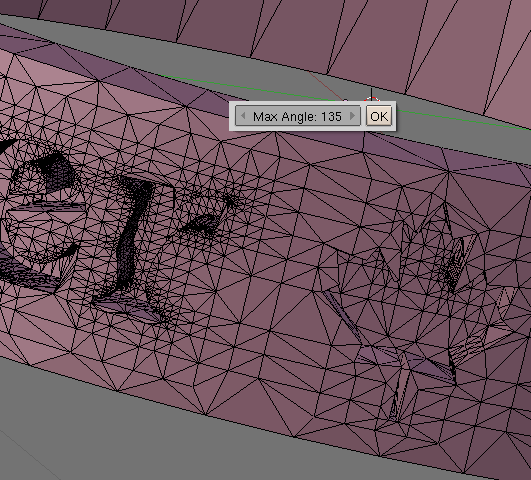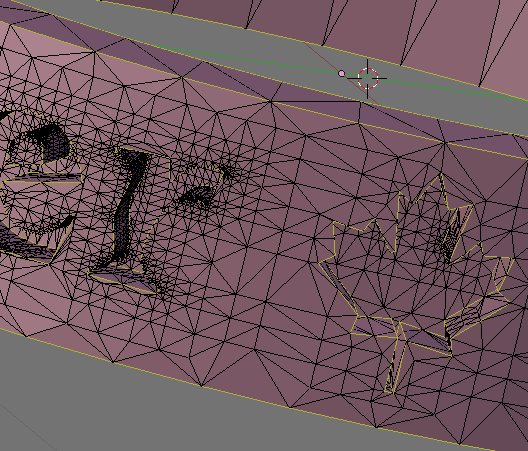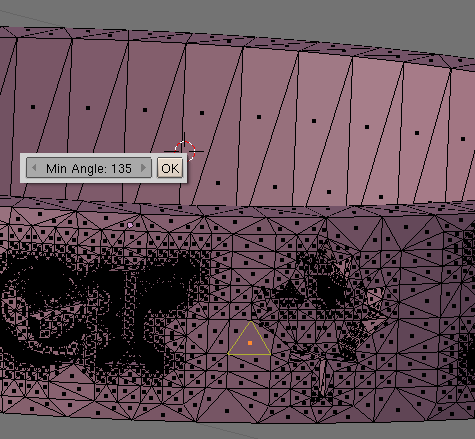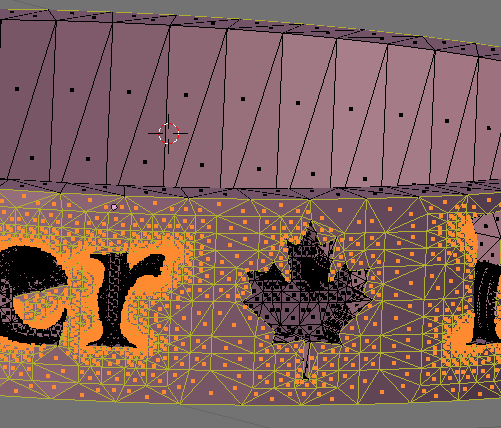Dev:Source/Modeling/Sharp Flat Select
Mesh Selection Tools Based on Sharpness and Flatness
A patch with an implementation of this described functionality can be found here:
http://projects.blender.org/tracker/index.php?func=detail&aid=3678&group_id=9&atid=127
This document discusses two related selection operations that should improve the workflow for some modelling tasks. A particular application might be mechanical modelling where one might want to separate what might be called a 'virtual face' -- a collection of faces that might have a common, relatively low, curvature so that as a collection they might serve the function of one, irregularly shaped, curved face. A set of neighboring coplanar faces would be a good example of this, but this concept could be made more flexible to include surfaces with similar curvature, such as the inside of a teacup, or the rim of a coin.
In what follows we will be describing 'sharpness' and 'flatness' as properties of the angle between adjacent faces. If this angle is small, then we call the edge that is shared by the adjacent faces 'sharp'. If it is a large angle, then we call this angle 'flat' (and, of course, if the angle between the faces is 180 degrees the faces are coplanar and the edge between the two faces is indeed flat).
Select Sharp Edges
This selection tool works in either vertex or edge selection modes and does not depend on the current selection.
The user can activate the feature through the select menu in either the 3D window header, or the toolbox. The hotkey Ctrl-Alt-Shift-S is also available. A 'sharpness' angle is then specified by the user.
For each edge that shares exactly two adjacent faces, the angle between the two faces is tested, and if that angle is found to be less than the 'sharpness' angle, the edge is selected.
An application where this would be useful is when you want to use a subsurf modifier to increase the resolution of the round parts of a mesh, but you want to maintain sharp edges. With this feature you can select the sharp edges, then crease them so that they aren't smoothed away in the derived subdivision surface.
Select Linked Flat Faces
This tool depends on the current selection and only works in face selection mode.
The user selects some faces, and activates the tool from the select menu of either the 3d view header or the toolbox, or through the hotkey Ctrl-Shift-Alt-F.
The user provides an angle, the 'flatness'.
The current selection is then expanded to include a zone of faces who's perimeter consists of sharp edges. The process works so that the original selection grows to include faces that are adjacent to the selected faces, provided that the angle between a selected face and an adjacent face is greater than the 'flatness' angle. Those faces that are adjacent to the newly selected faces are similarly tested and potentially selected, and this process continues until no new faces can be selected, producing a region of linked 'flat' faces.



